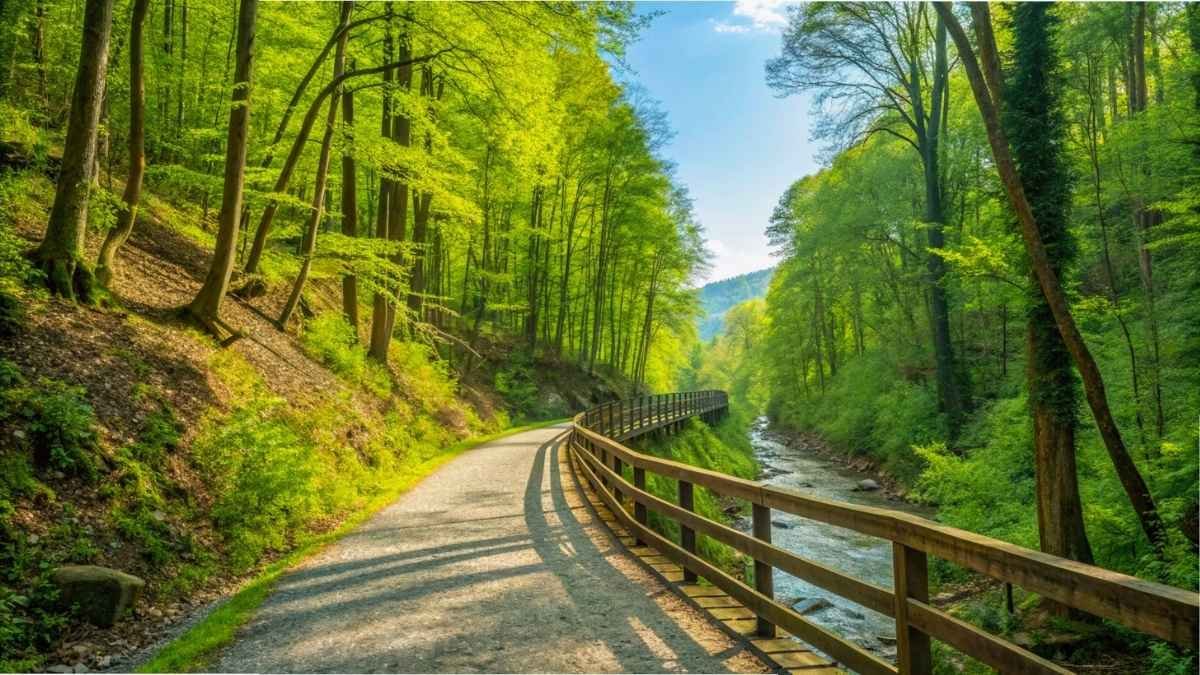
The magic of walking off a trail, into town, and being given a hug by the sun on your back. Delicious boots that bring the least of you along to forests and fields, but also directly to local coffee shops, artisan shops, and tales incubating.
These are not just hikes, they are trips woven by whimsy, intimacy, and culture. This is our list for the folks who demand more than solitude and vistas… a little small town’s soul is needed too. The Best Ten Trails, where every mile takes you to the spot where you’ll want to stop and stay. Let us walk it.
1. West Maroon Pass Trail (Crested Butte to Aspen, Colorado)
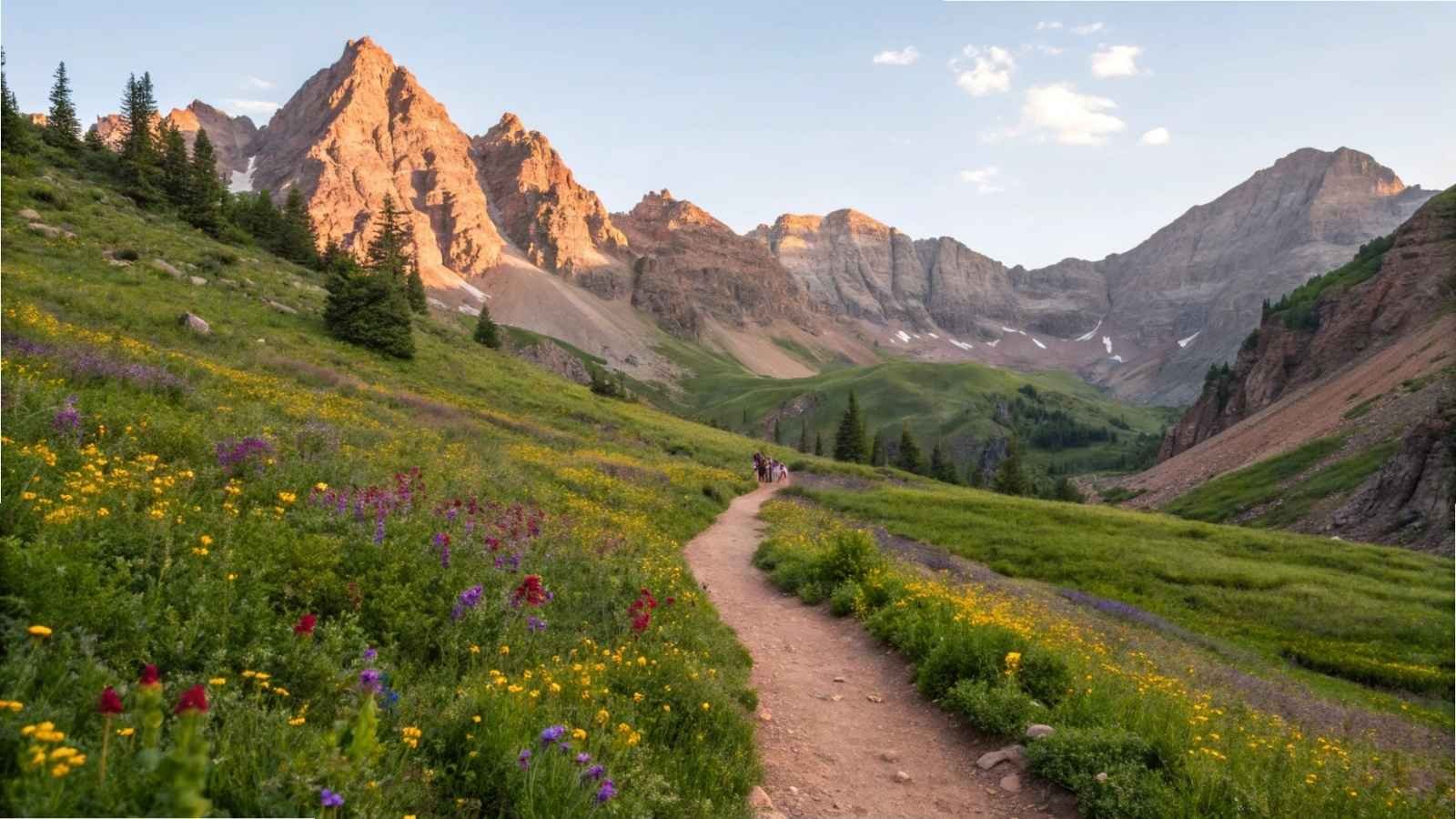
This trail is an alpine dream. Winding through wildflower meadows, across high-altitude ridges, and between two of Colorado’s most iconic mountain towns—Crested Butte and Aspen—the West Maroon Pass Trail is as thrilling culturally as it is scenically. While the full hike is about 10.5 miles one-way, many treat it as a “hike-through” with a shuttle or overnight in either town.
Built on its cool factor as the Wildflower Capital of Colorado, Crested Butte pops with wildflowers in the summer and hangs on to its mining town from another era charm. The other side is a cultural mecca with major art galleries, historic architecture, and live music from the snug taverns. Between the two, you have: Ridiculous 360° views of Maroon Bells-Snowmass Wilderness packed onto this trail.
The best part is the sense of connection. This isn’t just trail hiking; it’s a high-elevation handshake between two vibrant communities. You hike out of coffee-scented mornings in Crested Butte and land in the après-hike sophistication of Aspen.
Quick Facts:
- Best Months to Visit: July to early September (for wildflowers and snow-free trails)
- Distance: 10.5 miles one way
- Difficulty: Moderate to Challenging (due to elevation—13,000+ ft pass)
- Best for: Wildflower lovers, photography, and mountain town charm
- Tip: Take the shuttle back or book a night in town and make it a 2-day experience
2. Empire State Trail (New York)
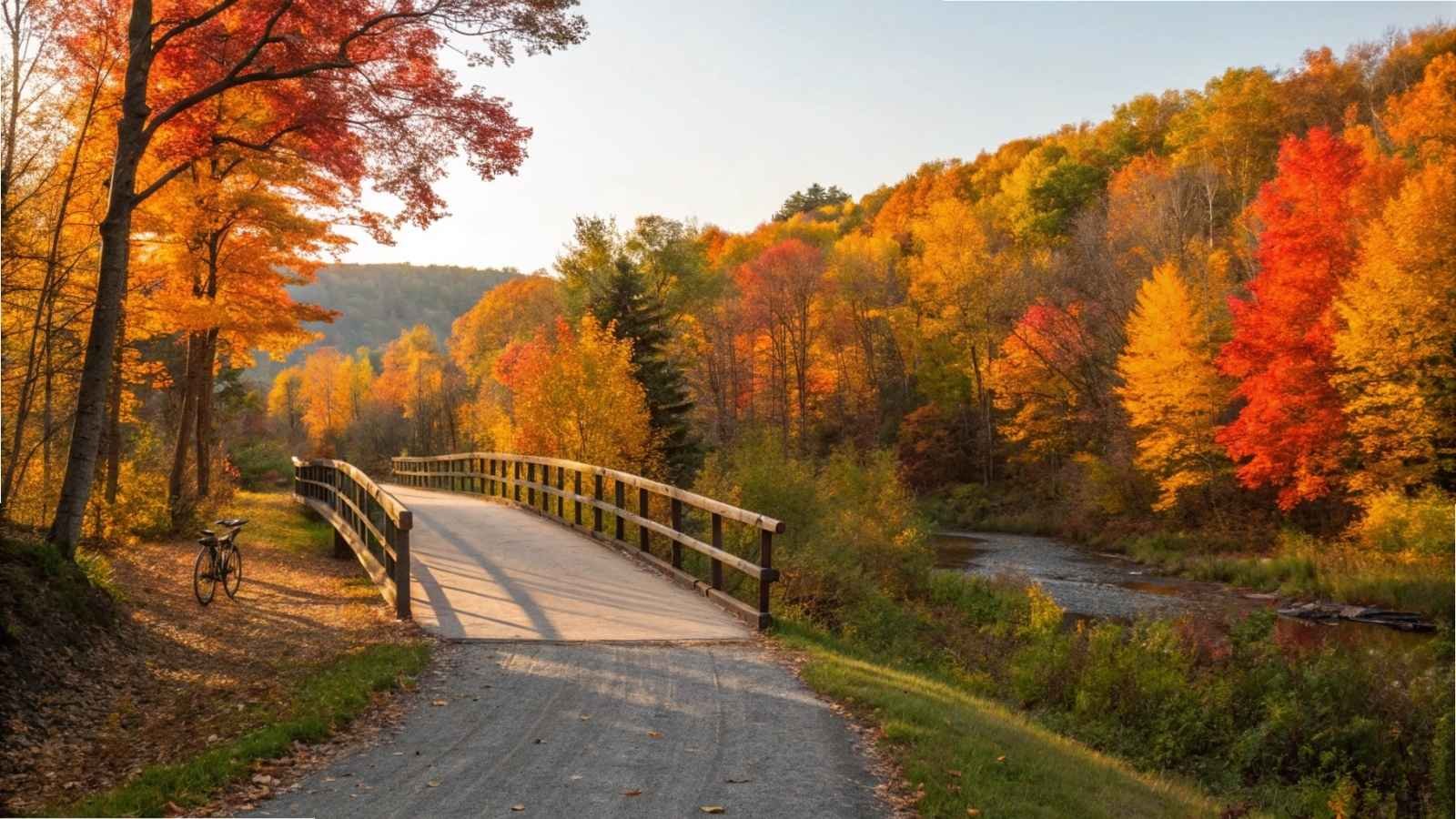
This relatively new mega-trail is a 730-mile ribbon of culture and countryside, stretching from New York City up to the Canadian border and west to Buffalo. What makes it special? The way it passes through dozens of storybook towns and vibrant cities, including Hudson, Schroon Lake, Albany, and Rochester.
You don’t have to do it all. Hikers often opt for the Hudson Valley section, where rolling vineyards, colonial hamlets, and scenic riverfront parks combine into one of the most picturesque urban-to-rural transitions in the country. Along the way, expect farmers markets, craft breweries, and even art museums right off the trail.
It’s the type of road that pushes you to leave a mark and also forces you to get out of your car—and get to know the person behind each stop along this path. Walk into a choose-your-adventure book, cobblestone streets winding with history from the Revolutionary times, and blueberries in every pancake turn.
Quick Facts:
- Best Months to Visit: May to October
- Distance: 750+ miles (most hike a section)
- Difficulty: Easy to Moderate (varied terrain, much of it paved)
- Best for: Urban-to-rural exploration, history buffs, foodies
- Tip: Focus on the Hudson Valley section for peak charm and walkability
3. Katy Trail State Park (Missouri)
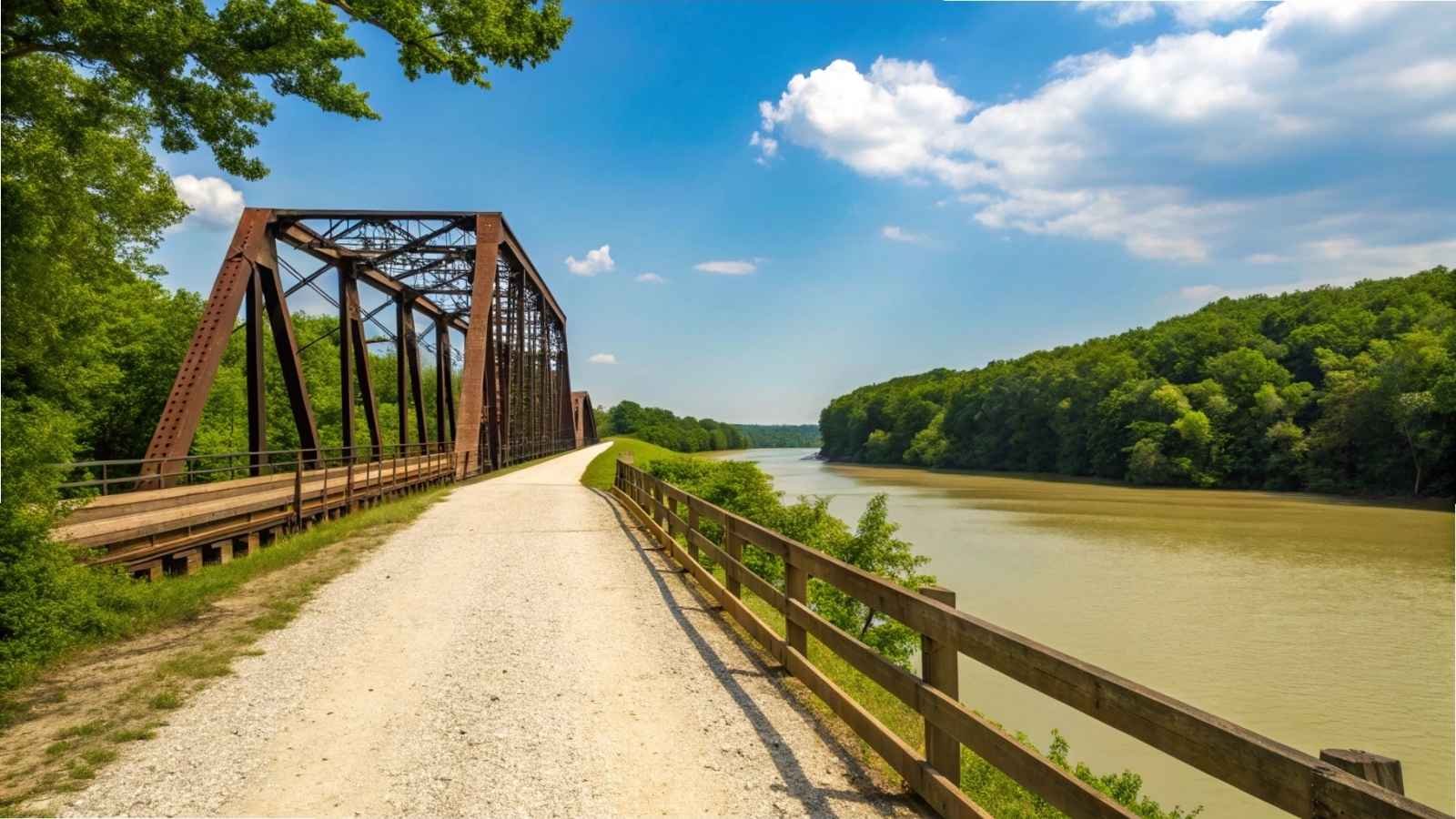
The Katy Trail, a 240-mile (386 km) stretch of rail-trail along the Missouri River in Missouri, is the country’s premier developed rail-trail and a peaceful gem. The crushed limestone path snakes through river towns of Hermann, Rocheport, Augusta, and more, with all of its own Missouri wine country charm, old buildings, and folksy residents.
You don’t have to run the whole thing for it to be a cool experience. A lot of people will choose a certain 20–30 mile stretch and base themselves in one town with day-hikes to the others. Think hiking all day, then wine tasting at a vineyard that sits right above the river in the afternoon. Sounds like a good day.
Leisure walking and casual hiking—this trail is mainly flat. But the integration with food, culture, and history of the region—the Lewis & Clark landing sites or Civil War homes—is more than just an ordinary trail. A rolling museum with wine tastings
Quick Facts:
- Best Months to Visit: April to June, September to October
- Distance: 240 miles
- Difficulty: Easy (mostly flat, well-maintained)
- Best for: Wine lovers, history buffs, beginners
- Tip: Stay in Hermann for a full small-town-meets-vineyard experience
4. Virginia Creeper Trail (Virginia)

There’s something almost nostalgic about this 34-mile trail through southwest Virginia, connecting the historic towns of Abingdon and Damascus. Once a rail line, the trail is now a woodsy, serene path filled with covered bridges, creeks, and canopies of green that burst into color come fall.
Damascus, also known as “Trail Town USA,” sits at the intersection of seven national trails and serves as the heartbeat of the Creeper. Abingdon, on the other end, is all Southern elegance—brick sidewalks, antique stores, and one of the oldest playhouses in the country (the Barter Theatre).
Whether you’re wandering through rhododendron tunnels or stopping for pie in a country diner, the Virginia Creeper Trail feels timeless. It’s not just a path—it’s a postcard come to life.
Quick Facts:
- Best Months to Visit: Mid-April to early November (Fall foliage is especially popular)
- Distance: 34 miles
- Difficulty: Easy to Moderate (mostly downhill if hiking from Whitetop to Damascus)
- Best for: Fall foliage, historic charm, easy family hikes
- Tip: Consider taking a shuttle to Whitetop and hiking back downhill toward Damascus
5. Chief Ladiga & Silver Comet Trail (Alabama & Georgia)

It is more than 90 miles of connected trail system running from Anniston, Alabama, to just outside Atlanta, with small towns, small farms, covered bridges, and Southern hospitality along the way. The Silver Comet Trail in Georgia and the Chief Ladiga Trail in Alabama are two trails that are linked.
In between, hikers will stop in towns such as Cedartown, Rockmart, and Piedmont to catch their breath and get muralped/churped at murals, old train depots, and home-cooked meals that provide lazy detours. It is flat and paved, so whether you are planning a weekend stroll or a multi-day trek.
One of the best things about this trail is the contrast—quiet rural scenes so close to the city center. One of those interesting trails with easy logistics, small town charm, and you can have nature.
Quick Facts:
- Best Months to Visit: March to May, September to November
- Distance: ~94 miles combined
- Difficulty: Easy (paved and mostly flat)
- Best for: Long-distance walking, cultural stops, mixed-use trail users
- Tip: Cedartown and Rockmart make great stopovers for exploring historic downtowns
6. Elroy-Sparta State Trail (Wisconsin)
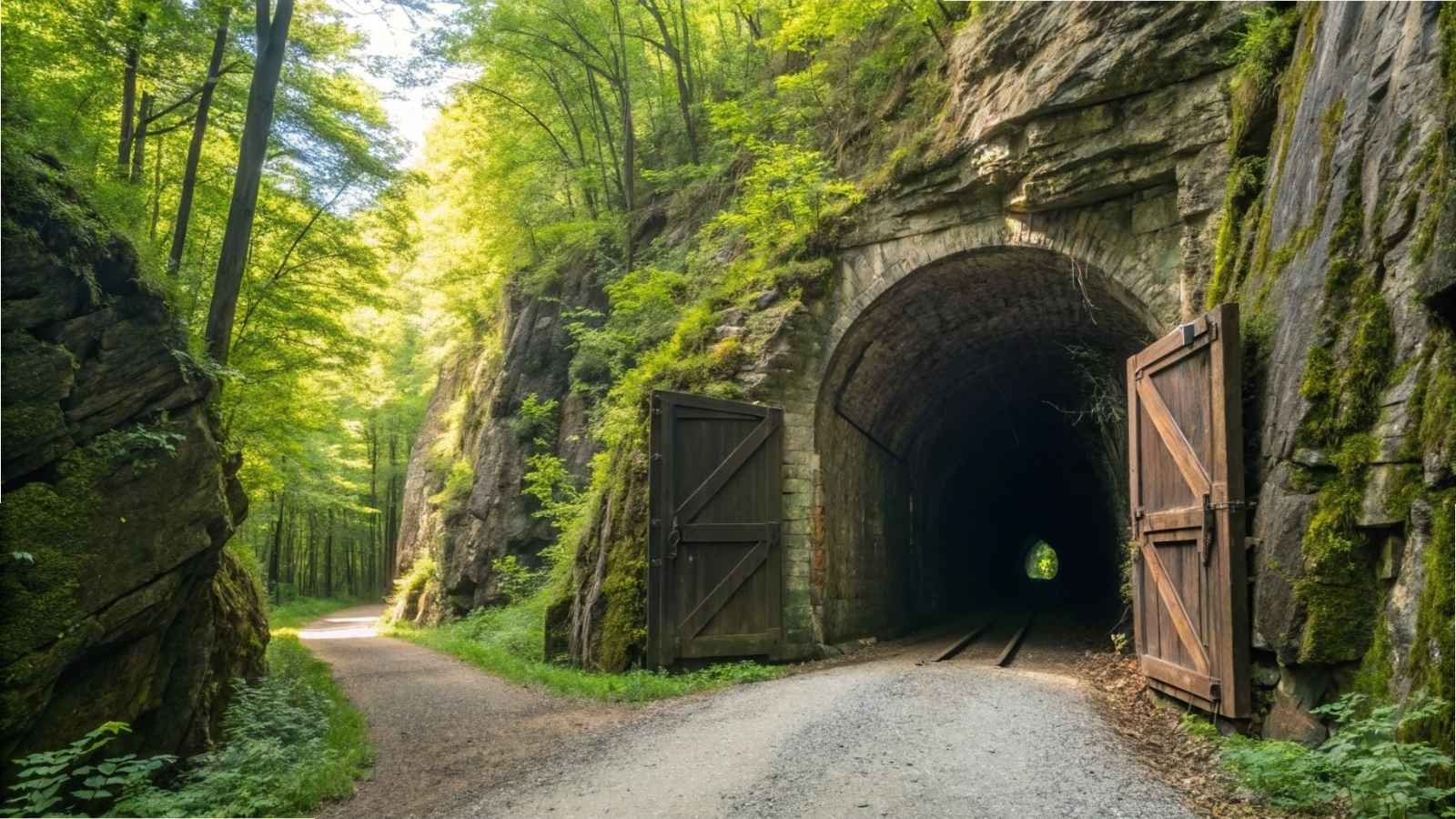
This short but sweet trail is a Midwestern gem. Stretching about 32 miles through Wisconsin farmland, it links the friendly towns of Elroy and Sparta with a path that includes three dramatic, hand-dug railroad tunnels — one over 3,800 feet long (bring a flashlight!).
What stands out here isn’t just the historic tunnels or the pastoral scenery — it’s the feeling of stepping into a simpler rhythm. Small towns like Norwalk and Wilton invite you to pause, snack on cheese curds, or chat with locals about everything from barn quilts to Friday fish fries.
If you have ever wanted a trail that moves slowly, the people are nice, and every place has been welcoming like the set of a Hallmark movie, this one is it.
Quick Facts:
- Best Months to Visit: May through October
- Distance: 32 miles
- Difficulty: Easy (gentle grades, packed limestone)
- Best for: Historic tunnels, quiet countryside, small-town charm
- Tip: Tunnel 3 near Norwalk is the longest and spookiest — a must-see
7. Mason-Dixon Trail (Pennsylvania, Maryland, Delaware)

This one’s for the hikers who like a bit of grit with their charm. The Mason-Dixon Trail is 200+ miles long and has hardly changed in any time since its original survey traverse of western Pennsylvania connecting along countless towns on old river heights — Havre de Grace, Wrightsville & Newark. Rough in some places with its souped-up woods, rocky bluffs, and an occasional river valley, but generally maintains continuity that should allow for Toste between stops.
There is a subtle power to be had in walking a worn with history trail and Civil War tales at the same time that will also allow you to duck into a waterside café and grab a crab cake or into an antique shop in an old town square.
For hikers craving a blend of adventure and Americana, the Mason-Dixon Trail is a compelling, lesser-known alternative that feels refreshingly off-the-radar.
Quick Facts:
- Best Months to Visit: April to June, September to November
- Distance: ~200 miles
- Difficulty: Moderate to Challenging (terrain varies)
- Best for: History lovers, river views, less-traveled trails
- Tip: Havre de Grace is a fantastic starting point with a walkable downtown and lighthouse views
8. Horse-Shoe Trail (Pennsylvania)

This 140-mile trail is an authentic hidden gem. It snakes from Valley Forge National Historical Park to the Appalachian Trail between Harrisburg and Route 81. The trail traverses rolling farmlands, through forests, and to historic towns from the colonial era, like Lancaster and Lebanon. It is a point of intersection of American history and the splendor of rural landscapes.
It’s the refreshing blend of revolutionary sites and rustic stone barns, horse-drawn Amish buggies, and blooming dogwoods that makes this trail sing. The towns you can explore along the way have a lot of old-world charm, with local crafts, farm markets, and covered bridges you can explore.
Not a lot of flash, but it has that soul, it nestles into the earth shyly dignity and an inner warmth that speaks to the hiker who treks warmly embraced by a higher purpose, feeling as if they are somewhere and walking with intent.
Quick Facts:
- Best Months to Visit: April to early June, late September to October
- Distance: ~140 miles
- Difficulty: Moderate (some road sections, rolling terrain)
- Best for: Historic hiking, rural culture, day-hikes between towns
- Tip: Begin near Valley Forge for a history-rich start and scenic forested stretches
9. Ghost Town Trail (Pennsylvania)
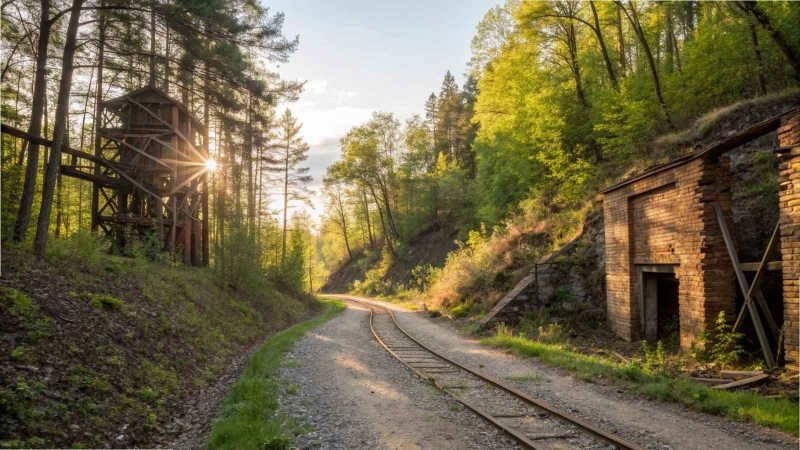
Even though the sound of this trail may scare you, it is in no way creepy — it’s tranquil, pretty, and historical. The 46-mile-long trail is lonely ghost towns and old coal railroads that dangle through a forested valley, quiet holding patterns such as Ebensburg or Vintondale.
Along the way, interpretive signs and relics from the past bring the story of Pennsylvania’s coal country to life. Hikers will see remnants of iron furnaces, trestle bridges, and old rail stations slowly reclaimed by nature, giving the trail a haunting beauty.
There is a quiet meditative quality to walking across the hallowed ground of a place that seems like a time capsule, lives lived and recited on moss-laden stone and rusted rail.
Quick Facts:
- Best Months to Visit: May to October
- Distance: 46 miles
- Difficulty: Easy to Moderate
- Best for: History buffs, solitude seekers, fall colors
- Tip: Vintondale is rich with restored landmarks and worth a longer stop
10. Kal-Haven Trail State Park (Michigan)

Hiking to the beach, if you ever did it, this trail may be for you. The Kal-Haven Trail stretches 33.5 miles from Kalamazoo, eventually reaching the sandy beach of Lake Michigan in South Haven.
Along the way, it traverses farms and woodlands as well as some more traditional small-town Michigan.
Towns like Gobles and Bloomingdale offer cozy pit stops with ice cream shops, farmer stands, and tiny lakeside parks. But the real treat is emerging from the green canopy and arriving in South Haven, where you can dip your feet in the lake after a day’s hike.
It’s the kind of trail that satisfies both nature lovers and beach goers, with a little Americana sprinkled in every few miles.
Quick Facts:
- Best Months to Visit: June to September (summer beach season)
- Distance: 33.5 miles
- Difficulty: Easy (flat, crushed limestone and asphalt)
- Best for: Summer hiking, family-friendly adventures, lakeside towns
- Tip: Start in Kalamazoo and end with a sunset over Lake Michigan in South Haven — unbeatable






